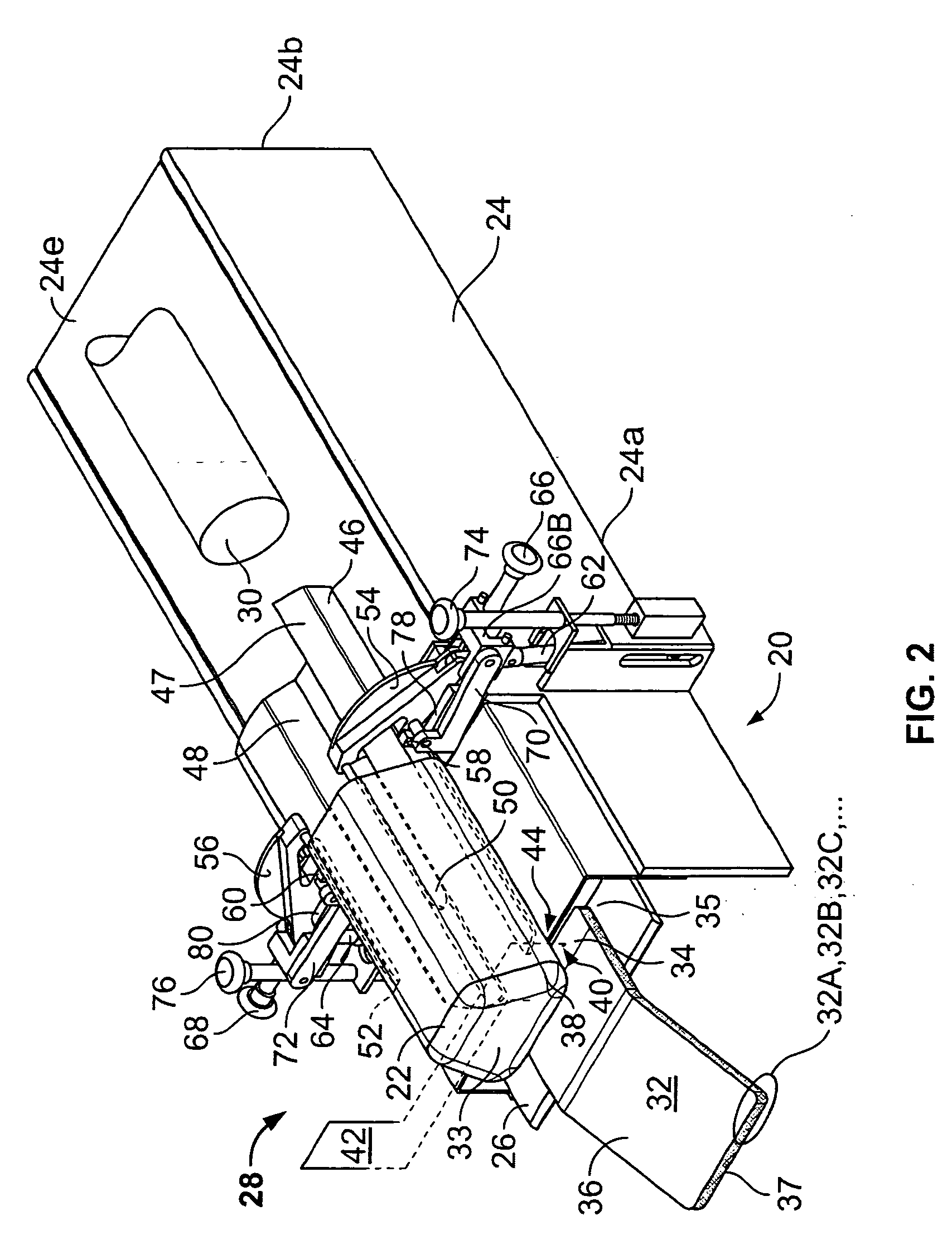Poly-stretch bagger system with hocking pusher
a technology of hocking pusher and polystretch bagger, which is applied in the direction of packaging foodstuffs, packaging goods, transportation and packaging, etc., can solve the problems of chicken blood in particular, “leakers” are a problem, and heat-sealed packages tend to leak
- Summary
- Abstract
- Description
- Claims
- Application Information
AI Technical Summary
Benefits of technology
Problems solved by technology
Method used
Image
Examples
Embodiment Construction
[0036] While the invention may be susceptible to embodiments in different forms, there is shown in the drawings, and herein will be described in detail, a specific embodiment with the understanding that the present disclosure is to be considered an exemplification of the principles of the invention, and is not intended to limit the invention to that as illustrated and described herein. For example, the present disclosure describes the method and apparatus as used to encase chickens and chicken parts, but the same method and apparatus can be used for other poultry and for other material without departure from the invention.
[0037] A perspective view of an apparatus 20 is shown in FIGS. 1 and 2. The apparatus 20 includes a rigid frame 24 having a front 24a, a rear 24b, a left side 24c, a right side 24d, and a top 24e. Please note that in the preferred embodiment, the rigid frame 24 as well as all other components of the apparatus 20 are made of stainless steel for ease of cleaning, bu...
PUM
| Property | Measurement | Unit |
|---|---|---|
| Angle | aaaaa | aaaaa |
| Size | aaaaa | aaaaa |
Abstract
Description
Claims
Application Information
 Login to View More
Login to View More - R&D
- Intellectual Property
- Life Sciences
- Materials
- Tech Scout
- Unparalleled Data Quality
- Higher Quality Content
- 60% Fewer Hallucinations
Browse by: Latest US Patents, China's latest patents, Technical Efficacy Thesaurus, Application Domain, Technology Topic, Popular Technical Reports.
© 2025 PatSnap. All rights reserved.Legal|Privacy policy|Modern Slavery Act Transparency Statement|Sitemap|About US| Contact US: help@patsnap.com



